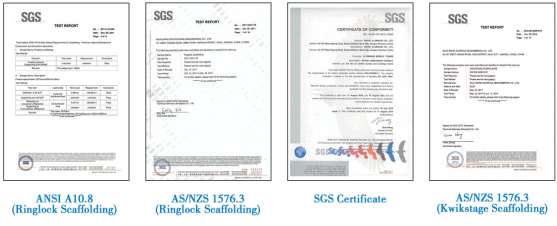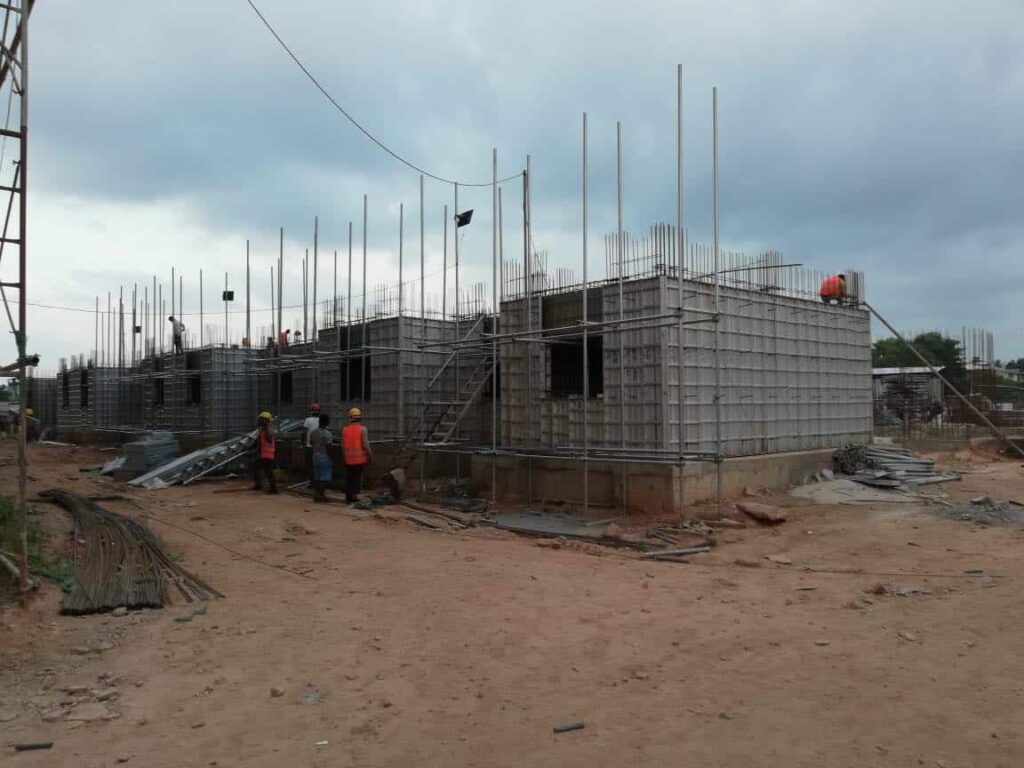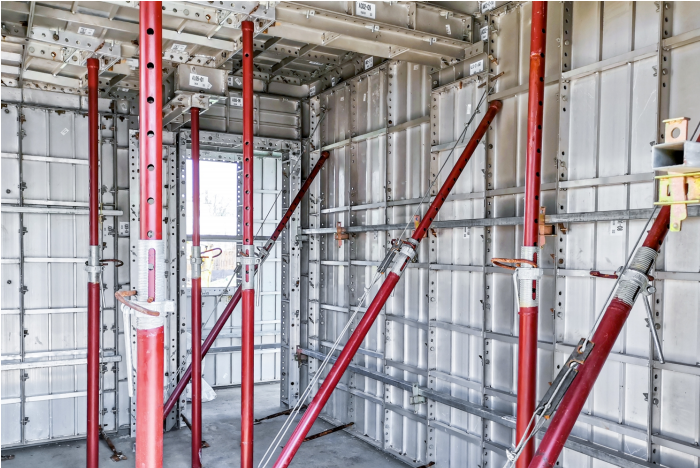Encofrado de aluminio
El encofrado de aluminio es un sistema de construcción revolucionario fabricado principalmente con perfiles de aleación de aluminio. Se utiliza ampliamente en la construcción moderna debido a sus propiedades superiores, como peso ligero, alta resistencia y excelente reciclabilidad. Este sistema es ideal para diversos proyectos de estructuras de hormigón, incluidos edificios residenciales, complejos comerciales, puentes y más.
Características del producto
Ligero y fácil de manejar.:El encofrado de aluminio es significativamente más ligero que el encofrado tradicional de madera o acero, lo que facilita su transporte e instalación. Esto reduce los costos de mano de obra y aumenta la eficiencia.
Alta capacidad de cargaCon una capacidad de carga que normalmente alcanza los 60 KN por metro cuadrado, el encofrado de aluminio satisface las demandas de la mayoría de los proyectos de construcción residencial.
Excelente durabilidad:El encofrado de aluminio es altamente resistente al óxido y a la corrosión, lo que garantiza una larga vida útil y la capacidad de reutilizarse entre 200 y 500 veces.
Alta eficiencia en la construcción:El proceso de instalación y desmontaje es sencillo y no requiere maquinaria pesada, lo que permite acortar los ciclos de construcción y reducir la duración del proyecto en un 30%.
Estandarización y versatilidad:Los componentes están altamente estandarizados y se pueden combinar libremente para adaptarse a diferentes tamaños y formas estructurales.
Encofrado de hormigón de alta precisión:El sistema de encofrado de aluminio garantiza una alta precisión en el encofrado del hormigón, dando como resultado superficies lisas que muchas veces eliminan la necesidad de enlucido.
Accesorios para encofrados de aluminio
| Accesorio | Descripción |
|---|---|
| Apoyo/Apoyo | Para ajustar la verticalidad y la horizontalidad. |
| Barra de acoplamiento/manguito de PVC | Para conectar paneles de pared opuestos |
| Abrazadera/cuña | Para bloquear paneles |
| Soporte/conector de viga | Para unir vigas y losas |
| Plataforma/soporte de trabajo | Accesorios auxiliares |
| Pernos/Tuercas/Arandelas | Conexión de componentes |
| Piezas de esquina | Ángulos estándar y no estándar |
| Herramientas de impacto | Palancas, abrazaderas para desmontaje |
Tamaños estándar de encofrados de aluminio:
| Componente | Tamaño (mm) | Peso máximo (kg) |
|---|---|---|
| Panel de pared | 600/500/450/400/300 x 2450 | 28 |
| Panel de losa | 600/450/400/300 x 1200 | 13 |
| Viga principal | 900/1150/1300 (largo) x 150 (ancho) x 125 (alto) | 9 |
| Viga final | 600/900/1150/1300 (largo) x 150 (ancho) x 125 (alto) | 9 |
| Gama estándar | 0,5 m – 11,85 m | – |
Especificaciones técnicas
- Material:Aleación de aluminio de alta resistencia.
- Peso:Aproximadamente 20-25 kg por metro cuadrado.
- Tasa de reutilización:200-500 veces
- Capacidad de carga:Hasta 60KN por metro cuadrado
Ahorro de tiempo:Gracias a la facilidad de manejo y la rápida instalación, el período de construcción por piso se puede acortar a 4-6 días.
Económico:A pesar de una mayor inversión inicial, el uso a largo plazo de encofrados de aluminio resulta rentable debido a su alta tasa de reutilización y durabilidad.
Beneficios ambientales:El encofrado de aluminio es reciclable y no produce residuos de construcción al desmontarlo, lo que se alinea con las prácticas de construcción sostenibles.
Alto valor económico:Cuando el encofrado ya no se puede utilizar, su valor como desecho sigue siendo alto, lo que supone un rendimiento financiero adicional.
Calidad, seguridad y rentabilidad son nuestros compromisos. Somos socios sinceros de todos nuestros clientes, independientemente de su tamaño. Por todo el mundo.


El encofrado de aluminio es adecuado para una amplia gama de proyectos de construcción, incluidos:
- Edificios de gran altura
- Complejos residenciales
- Edificios comerciales
- Puentes y túneles
- Estructuras de estacionamiento subterráneo

Pasos para la instalación de encofrados de aluminio
- Coloque el área de la losa del piso de acuerdo con los planos de ingeniería y ate las barras de refuerzo con precisión con las nervaduras de posicionamiento soldadas en su lugar.
- Compruebe la planicidad de la losa de base de hormigón. Si la desviación supera los 8 mm, es necesario corregirla. Limpie la superficie de hormigón en las juntas de construcción.
- Ensamble paneles de encofrado de aluminio utilizando abrazaderas y cuñas para crear una unidad integrada.
- Coloque correctamente el encofrado ensamblado, alineándolo con las líneas de trazado y las marcas de elevación. Fíjelo con clavos de acero.
- En las interfaces entre encofrados de aluminio y madera para paredes, instale barras de refuerzo de posicionamiento adicionales para refuerzo.
- Aplique el agente desmoldante uniformemente sobre la cara del encofrado antes de hormigonar, pero no aplique en exceso.
- Instalar el encofrado del piso, comenzando por las esquinas, seguido por el encofrado de vigas y los paneles de losa.
- Colocar acero de refuerzo para losa de piso.
- Vierta el hormigón y vibre bien para compactarlo.
- Después del fraguado inicial del hormigón, desmonte los paneles de losa, el encofrado de vigas y luego el encofrado de pared en secuencia.
- Limpie los componentes del encofrado, clasifíquelos y apílelos adecuadamente para el próximo ciclo de uso.
Seguir el procedimiento de instalación correcto es crucial para garantizar la precisión dimensional y la calidad de la superficie de los elementos de hormigón fundido.
Preguntas frecuentes sobre encofrados de aluminio
Si bien el costo inicial es más alto en comparación con los materiales tradicionales, la alta tasa de reutilización y la durabilidad lo convierten en una opción rentable a largo plazo.
El encofrado de aluminio es versátil y adecuado para la mayoría de las estructuras de hormigón. Sin embargo, es posible que se requieran soluciones personalizadas para proyectos con requisitos estructurales específicos.
Es necesario realizar una limpieza y un mantenimiento periódicos. Después de cada uso, elimine los residuos de hormigón y la suciedad, repare los daños y guarde el encofrado de forma adecuada para evitar deformaciones y prolongar su vida útil.

